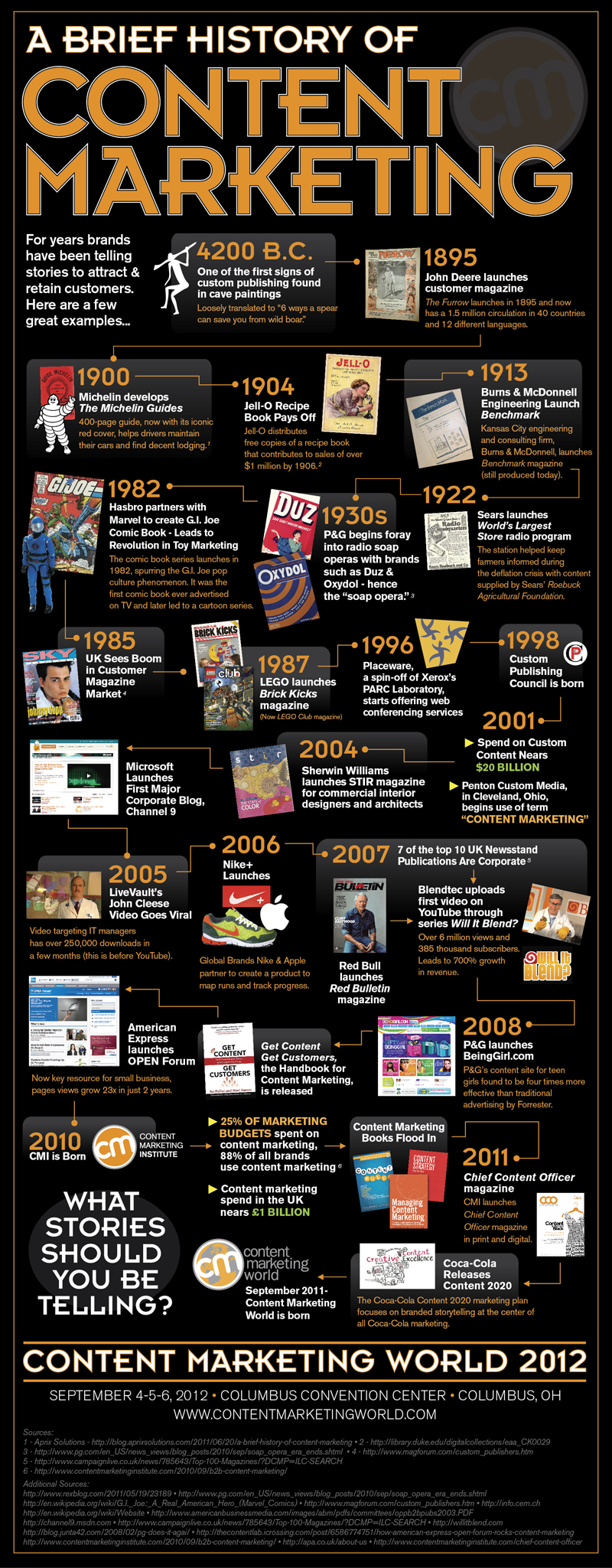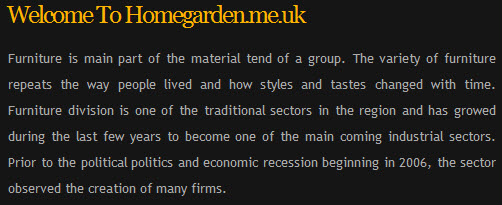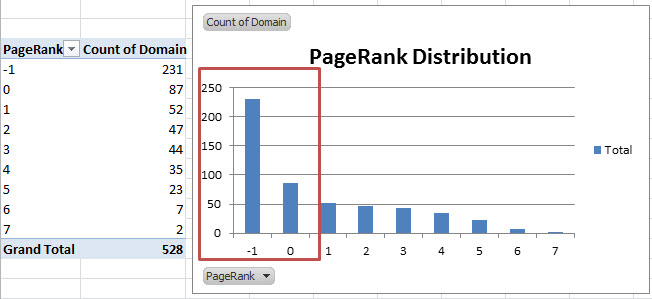A few months ago I went to collect a friend from hospital. Arriving
early, I entered the waiting room and noticed in-house magazines stacked
by the door. I picked one up, grabbed a coffee and took a seat.
The magazine read like a very long press release, blabbering on about
patient-centric care and employee awards. I was quickly bored, so I
read from my phone instead. The magazine failed in its purpose.
Effective content marketing holds people’s attention. It gives you a
distinctive brand, loyal fans and increased sales. You don’t need a big
budget to succeed, which is why good content marketing is the single
best way to beat bigger competitors online.
Content marketing used to be about customer magazines and mailed
newsletters. Now it covers blogs, email newsletters, eBooks, white
papers, articles, videos and more. In this article, you will learn about
content marketing techniques that you can apply to your business.
[
Note: Have you already pre-ordered your copy of our
Printed Smashing Book #3?
The book is a professional guide on how to redesign websites and it
also introduces a whole new mindset for progressive Web design, written
by experts for you.]
Prepare
Before creating content, you need to prepare. Think about your tone
and style, where to find the best writers and how to organize your
workflow.
Tone and Style
Too many companies start writing content before their brand has a
defined voice. This leads to inconsistency. It’s like using one logo in
your brochure, another on your website and another on your blog.
When speaking with people, you see their expressions and you adjust
your tone accordingly. In a meeting, when you see that someone is
confused, you clarify meaning, simplify sentences and speak
reassuringly. The Web offers no feedback until your content is
published, and then it’s too late.
To get the right tone, think of the person who best represents your
brand. The person could be fictional or real, and they may or may not
work for you. Now think of adjectives that describe them. Once you know
what you want, provide clear details and practical examples.
Let’s say you run a travel agency that markets to young independent
travelers. You want your representative to sound experienced, helpful
and friendly. Try using a table like the one below to delineate what
your adjectives do and don’t mean:
|
Experienced |
Helpful |
Friendly |
| Does mean… |
Knowledgeable
Write with authority, as though the knowledge was gained first hand. |
Efficient
Explain things clearly and positively. Make sure all relevant information is obvious and accessible. |
Personal
Use informal language, and write as though you are talking to one person, rather than a broad customer base. |
| Does not mean… |
Condescending
You know a lot but don’t talk down to your customers. They probably know a lot too. |
Pushy
Promote your company, but not at the expense of good service. Always have your reader’s wants in mind. |
Unprofessional
Make sure there are no grammar or spelling mistakes. Proofread carefully. |
You’ll also need a style guide, so that your authors write
consistently. Should you use title case in headings? Are contractions
appropriate? Check out
The Yahoo! Style Guide 3 for ideas.
Picking Content Creators
Don’t pick the wrong people to create your content. It’s hard for a
non-technical person to pick the best Web developer, and it’s the same
with content marketing. You need to know about content creation in order
to judge other people’s abilities. Some people suggest making everyone
in your company a content creator, but this is a bad idea. Not everyone
can be a good accountant, secretary or rocket scientist, and the same
applies here. To succeed, you should pick the best.
Ask everyone who wants to be a content creator to write a sample blog
post. Then you can find the best few people. Some might not be able to
write but have interesting ideas. In this case, you’ll need someone to
edit their copy. Perhaps you want to raise the profile of a particular
staff member. If they can’t write, have someone ghostwrite for them.
Workflow
Some companies have a simple workflow: one person does everything.
The person researches, writes and publishes without any input from
others. This model can work, but you’ll see more success with a workflow
that enables other people to take part. Have different people write,
edit and proofread. It’s a good way to catch mistakes and to bring more
ideas into the process. Think about the best process for each type of
content. One person might be enough for a tweet, whereas four to six
people might be ideal for an eBook.
Imagine you’ve got a well-staffed company that is putting together a
B2B white paper. You could organize your workflow like this:
 An example of how to organize your workflow in a well-staffed company.
An example of how to organize your workflow in a well-staffed company.
Persuade
Your content should be persuasive. Pay close attention to how you speak and what you say.
Use Simple Language
Take the question below on Yahoo! Answers. To “sound intelligent,”
this person would like to know “big words that replace everyday small
words.”

Many people make this mistake. They use language that is
unnecessarily complicated, usually to show off or to sound corporate and
professional.
“Short words are best and the old words when short are best of all,”
said Winston Churchill. So, don’t talk about “taking a holistic view of a
company’s marketing strategy to deliver strategic insights, precise
analysis and out-of-the-box thinking.”
Prefer “make” to “manufacture,” and “use” to “utilize.” While
“quantitative easing” offers precision to economists, your personal
finance audience would prefer “print money.”
Lauren Keating has
studied the effect of scientific language
on the persuasiveness of copy. She found that most people respond best
to advertisements that contain no scientific language. People found them
more readable and persuasive, and they felt more willing to buy the
product. Lauren’s conclusion was clear: copy needs to be plain and
simple.
Have Opinions
Interesting people have opinions, and interesting brands are the same. Look at the amazing work of new search engine
DuckDuckGo 4. It has positioned itself as the antithesis of Google, launching websites that criticize how the search giant
tracks you 5 and
puts you in a bubble 6. The strategy is paying off: DuckDuckGo is
seeing explosive growth 7.
 8DuckDuckGo 9 is an alternative search engine that breaks you out of your Filter Bubble.
8DuckDuckGo 9 is an alternative search engine that breaks you out of your Filter Bubble.
While this strategy is perfect for defeating a big incumbent, you
don’t have to be openly hostile to your competitors. You can say what
you think without mentioning their names.
Bear in mind that people are ideologically motivated. Brendan Nyhan and Jason Reifler’s study, “
When Corrections Fail”,
describes the “backfire effect” of trying to correct people’s deeply
held beliefs. The authors found that contradicting people’s
misconceptions actually strengthened those opinions. If people see you
as an ideological ally (like a political party), they are more likely to
agree with you on other issues — even ideologically inconsistent or
non-ideological ones. You can use your opinions to attract people to
your company: converting the agnostic or validating the views of allies.
As a small-scale brewer, for example, you might have a strong opinion
on ale, believing in craft over mass production. You might think the
market is dominated by big businesses that sacrifice quality for
quantity. In this situation, you could use content marketing to talk
about the best way to make beer. By stressing how seriously you take the
development of your product, you communicate your opinion to those who
share it without directly criticizing your competitors.
Think politically: consider the popularity of your views and whether
they will attract media coverage. Ideally, your opinions should be bold
and popular.
Sell the Benefits
In the same way that you sell your products and services, tell your
audience the benefits of your content. This technique is essential if
your audience doesn’t know what it wants.
PaperlessPipeline 10
is a transaction management and document storage app for real estate
brokers. Its founder, Dane Maxwell, had a creative idea to sell his
product. The biggest problem for real estate brokers is recruiting. So,
Dane invited them to a webinar titled “Recruiting Secrets of the
200-Plus Agent Office in Tennessee.” Brokers didn’t even know they
needed to manage transactions, so he didn’t mention it in the
invitation.
 11Paperless Pipeline takes your real estate transactions and related documents online—without changing how you work.
11Paperless Pipeline takes your real estate transactions and related documents online—without changing how you work.
In the webinar, he introduced PaperlessPipeline and explained how it
enables brokers to recruit more agents. The webinar attracted 120
guests, and “16 ended up buying at the end,” said Dane in an
interview with Mixergy 12.
Imagine you run a company that develops technology for mobile phones,
and you want to promote a new femtocell that boosts mobile reception in
public spaces and rural areas. This technology could be valuable to
people who want to improve mobile reception, but those people might not
have heard of it.
So, instead of promoting the technology directly, offer content that
focuses on the benefits. By using benefit-focused copy, you immediately
tell the reader what’s in it for them.
Teach
Think about what your audience wants. People want to hear answers and to learn something new, so give them what they want.
Give Answers
Content marketing needs to offer practical advice that people can
use. Readers have been trained to expect answers on the Web, and yet so
much content fails to deliver.
Consider FeeFighters, a comparison website for credit card processing. One of its blog posts,
Do You Know What Makes Up Your Credit Score? 13,
talks about the factors that affect your credit score. Instead of
offering abstract advice and concepts, the post provides practical tips
for improving your credit score:
Area #2: Your Credit Utilization Ratio
The second largest determining factor in what makes up your score is
the amount of credit that you have available to you in relationship to
how much of that credit you’ve used. This accounts for 30 percent of
your credit score. The optimal rate is 30 percent, which means that if
you have $10,000 in credit available to you, you should only be using
about $3,000 of it. One trap that some people fall into is believing
that if they max out their credit cards every month and then pay them
off at the end of the month, they’ll build their credit. But since that
gives them a 100 percent credit utilization ratio, and that ratio
accounts for 30 percent of their overall credit score, they’re really
doing more harm than good.
Say or Do Something New
Most content is boring and unoriginal, which is good for you. It makes it easier to beat your competitors.
You can make your content interesting by doing something new, without
necessarily saying something new. For instance, you could write a
comprehensive article on a topic that has only piecemeal information
scattered across the Web. Or you could use a different format for a
topic that gets the same treatment; rather than writing the fiftieth
blog post on a topic, shoot the first video.
You can also make your content interesting by saying something new. An
infographic by Rate Rush 14
compares the popularity of Digg to Reddit, creatively combining a bar
graph and clock to present the data. Although Rate Rush is a personal
finance website, with little connection to social news, its staff
researched a topic they were interested in and drew attention by putting
it to imaginative use.

Our agency also researches things that we find interesting, and this has been a great source of content. In 2010,
we polled around 1000 iPad owners 15 to find out how consumers use the device. It led to a slew of media attention.
You can do the same. Come up with an original idea to research, and
then undertake a study. Also look into studies that your business has
done in the past, because interesting stuff might be lying around. One
of our clients looked through her company’s research archive and found
amazing material. She didn’t spend any money on research but got a lot
of great content, links and media coverage.
Captivate
Give your content more personality. Captivate your audience with
stories and characters that will draw them in and keep them coming back.
Tell a Story
Telling a story is a great way to connect with readers. According to a number of studies
summed up by Rob Gill
of Swinburne University of Technology, telling stories can be useful in
corporate communication. Storytelling is fundamental to human
interaction, and it can make your content more compelling and your brand
more engaging.
Citing Annette Simmons’
The Story Factor, Rob says this: “It
is believed people receiving the narration often come to the same
conclusion as the narrator, but through using their own decision-making
processes.” Told through a story, a message becomes more personal and
relevant. The reader is also more likely to remember what was said.
Rand Fishkin is the co-founder and CEO of
SEOmoz 16. Instead of sharing only positive accounts of his business, he also writes about difficulties such as his
failed attempt to raise capital 17:
Michelle was the first to note that something was “odd.” In a phone
call with Neil, she heard him comment that they “needed to do more
digging into the market.” In her opinion, this was very peculiar.…
Tuesday morning we got the call; no deal.
 An email shared by Rand Fishkin in his post 18 about SEOmoz’s attempt to raise funding.
An email shared by Rand Fishkin in his post 18 about SEOmoz’s attempt to raise funding.
Brands need stories, and stories need people, suspense, conflicts and
crises. By reading SEOmoz’s content, and seeing both the positive and
negative, you become immersed in its story.
Ikea is another example of a brand that tells stories that generate opinions about its company. For instance,
it plays up its Swedish roots 19 and paints a romantic image of a wholesome and natural society. Its website is full of stories that contribute to this effect.
A
survey conducted by the B2B Technology Marketing Community
showed that around 82% of LinkedIn users found that telling a story
through case studies was the most effective form of content marketing.
Sometimes you’ll want to use anecdotes to make a point, and sometimes
you’ll write a post or tweet to build a narrative. When you’re
cultivating a story, keep the information simple, and don’t be afraid to
repeat points here and there; some readers might have missed what you
said before.
Always mix interesting stories with useful information; fail to do this and your audience will feel you’re wasting their time.
Use Real People
Think of your favorite writers. You’ve probably seen their photos and
heard them speak. Likewise, people need to see and hear your employees,
so use pictures, audio and video. This will bring your audience closer
to your brand.
Jakob Nielsen has studied 20
people’s reactions to images online. He used eye-tracking software to
discover that people ignore images that seem decorative, random or
generic. They even ignore generic images of people. But when they come
across a photo of a “real” person, they engage with it for a longer
time.
People prefer to get involved with a company with which they feel a
personal connection. But introduce your employees gradually; as with any
story, introduce too many characters too early and you’ll confuse your
audience.
Summary
Develop a compelling tone of voice. Don’t assume that anyone can
write amazing copy, because they can’t. If you want the best content,
then you need the best writers and thinkers.
Produce something informative that people will want to read. Give
your brand a personality and your business will benefit across the
board, from recruitment to sales. Warren Buffett looks for businesses
protected by “unbreachable moats,” and no moat is more unbreachable than
a brand with a story, ideas and opinions.
Written By: Craig Anderson Source: SmashingMagazine.com




























